International
nanoFlowcell AG achieves breakthrough in Flow Cell Technology
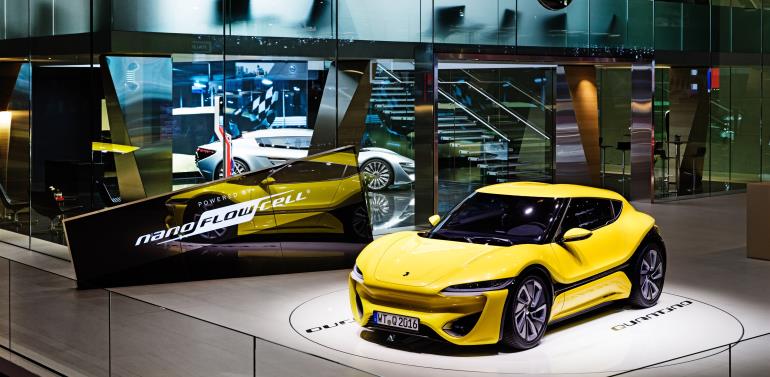
nanoFlowcell AG recently demonstrated the performance of its nanoFlowcell® accumulator. The sporty electric QUANTiNO developed by the company and powered by nanoFlowcell® drove 14 hours non-stop without pausing to refuel. The nanoFlowcell® drive thus lasted orders of magnitude longer than could currently be achieved by the most powerful electric car equipped with lithium-ion technology. Compared with conventional flow cells, nanoFlowcell AG succeeded in raising the power output of the nanoFlowcell® by a factor of around 20. A crucial factor here is the increased energy density of the patent-pending electrolyte liquid developed by the company, standing at around 600 watt hours per litre.
“Our breakthrough in flow cell technology is a revolution for electromobility and for the way we will produce energy decentrally in future,” explains Nunzio La Vecchia, the inventor of nanoFlowcell® and Chief Technology Officer of nanoFlowcell AG. The potential applications for the nanoFlowcell® are virtually limitless and our current development shows that our technology can also provide the DNA for a super sports car. But nanoFlowcell® could do so much more – such as deliver the electricity for aircraft on-board systems, replace large, high-emissions marine diesel engines or supply sustainable eco-electricity to homes and residential areas.
And wherever the thermal runaway of lithium-ion batteries can have devastating effects, where the use of fossil fuels has a harmful impact on our health and environment, where the noise of internal combustion engines has a negative impact on those living on land or in the sea, the use of nanoFlowcell® would be sensible and desirable.
“We started with the combination of flow cell and car, because it represented probably the most complex application for our technology and therefore the greatest challenge, while at the same time being the most straightforward and understandable to communicate,” said La Vecchia. The downside is the somewhat higher development costs in the upper eight-figure range.
Another benefit of the technology is the fact that the nanoFlowcell® electrolytes are neither flammable nor explosive. They are kind to the environment, sustainable and harmless to health. In operation, the nanoFlowcell® is virtually silent, long-lasting and highly stable. According to the company’s own calculations, large-scale industrial manufacture of the electrically charged liquid required to run a nanoFlowcell® drive would cost a few cents per litre.
Because the power of the nanoFlowcell® is dependent on the surface area of its membrane, the volume of electrolyte stored and the type of electrolyte used, the drive can also be scaled as required, making it adaptable to a diverse array of applications. Theoretically, a nanoFlowcell® could also power a mobile phone. As long as positively and negatively charged electrolyte fluids are being pumped past the cell membrane and an exchange of ions is taking place, the cell produces energy for the electric motors – silently and with no harmful emissions.
In an initial endurance test, during which the QUANTiNO powered by nanoFlowcell® drove non-stop for 14 hours, its overall consumption stood at around two-times 35 litres of electrolyte liquid, with an average energy consumption of around 12 to 14 kWh per 100 kilometres. This is a previously unheard-of endurance figure for car running on electricity alone. A comparable nanoFlowcell® could also be installed in a sports boat or aeroplane. La Vecchia’s development team has already embarked on this task to show that nanoFlowcell® technology can pass muster anywhere – on land, on water and in the air.
“With nanoFlowcell®, we are demonstrating that electromobility does not mean having to make compromises. Vehicles driven by nanoFlowcell® are sporty and dynamic, kind to the environment, fuel-efficient and have zero harmful emissions,” said Nunzio La Vecchia. “The nanoFlowcell® technology we have developed is a real alternative for the mobility of the future and for fulfilling the long-term need for alternative fuels.”
-
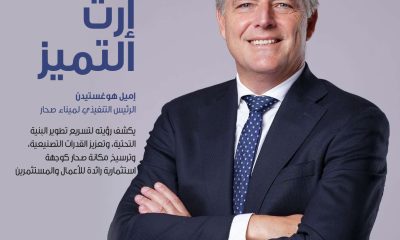
 Alamaliktistaad Magazines2 months ago
Alamaliktistaad Magazines2 months agoAlam Al Iktisaad – September 2025 Edition
-

 News2 months ago
News2 months agoKitchenomiKs Secures Investment of US$3.2M Led by Jasoor Ventures
-
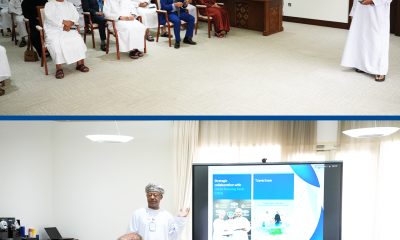
 Banking & Finance2 months ago
Banking & Finance2 months agoOman Arab Bank Highlights Its Ongoing Strategic Initiatives and Future Plans
-

 News2 months ago
News2 months agoIEA Expects Global Oil Market to Remain Oversupplied in 2026
-
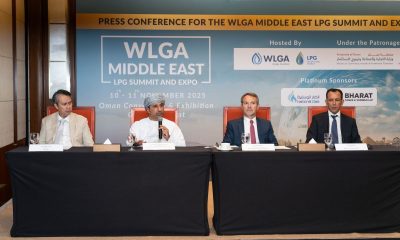
 Energy2 months ago
Energy2 months agoWLGA Middle East LPG Summit & Expo 2025 to be held at OCEC on November 10 and 11
-

 Real Estate2 months ago
Real Estate2 months agoAl Mouj Muscat Unveils Azura Beach Residences Phase 2: A New Chapter in Waterfront Living
-

 Leaders Speak1 month ago
Leaders Speak1 month agoDhofar International Development and Investment Company: Driving Sustainable Growth and Strategic Synergies in Oman’s Investment Landscape
-
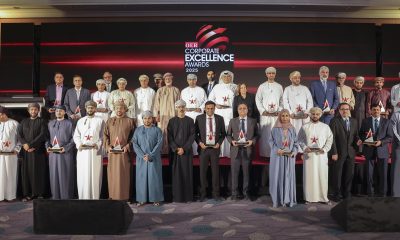
 Events1 month ago
Events1 month agoOER Corporate Excellence Awards 2025 Honours Entities and Innovations in Oman































You must be logged in to post a comment Login